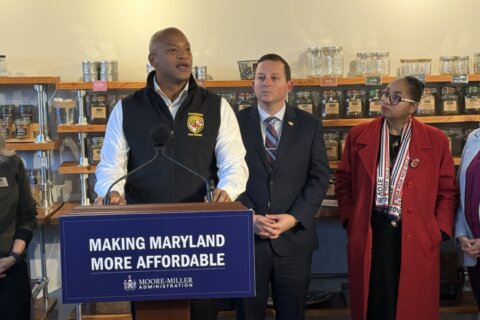It may be weeks before Maryland’s July 19 primary election results are tabulated and certified. The issue: the growing popularity of voting by mail coupled with Maryland’s singular law on when and how mail-in ballots are handled.
Maryland State Sen. Cheryl Kagan said mail-in ballots “cannot be touched until Thursday after Election Day.”
Amanda Zoch, who works on issues tied to elections and redistricting at the National Conference of State Legislatures said, “Maryland is unique in that it’s the only state that does not allow the processing of ballots until after the polls close on Election Day.”
Zoch explains that there’s a difference between the processing and counting of ballots.
“Processing involves checking the signature, checking identification that’s been provided, maybe taking the ballot out of the envelope, separating it, folding it and flattening it — everything up to actually counting and tallying votes,” she said.
Because the processing of the ballots isn’t allowed until after Election Day, the time it takes to tally the votes and reach certification takes longer.
Kagan is among the Maryland state lawmakers who worked to pass a bill to change state law, and process mail-in ballots earlier, but that law was vetoed by Gov. Larry Hogan, who wrote in his veto message in May that he had concerns over “basic security measures, such as signature verification.”
Kagan, a Democrat, said shifting to a system that allows for processing mail-in ballots ahead of the tallying process would instill more confidence in how results are tabulated. Delays, she said, can fuel speculation among conspiracy theorists about the integrity of the process.
Until state law is changed, Kagan said it’s important that voters know in advance, before any votes are counted, that there will be a delay. Voters should also be informed that it may be several weeks before the winner of some of the biggest races is known with certainty, and it’s due to “careful county,” Kagan said.
Nikki Charlson, the deputy administrator at the State Board of Elections, said, many of the smaller to medium-sized counties will probably be done counting on July 29 — that’s the final date for canvassing.
But Charlson said the larger counties may take longer. The count “will then continue into August until they have finished counting,” Charlson said.
The current interest in the vote-by-mail process is due in part to the pandemic. In Maryland’s 2020 primary election, 97% of the state’s voters cast their ballots by mail.
That’s in stark difference to past voter practice, said Charlson. “Maryland has historically been a state where less than 10% of our voter turnout was associated with mail-in voting.”
Charlson emphasized that as the local boards of election tally mail-in ballots, there will be updated reports on the results.
“We’ll be releasing how many ballots are left to count,” she said. “This is the normal process. There is nothing unusual about us counting ballots after Election Day. It happens every election.”
Kagan said that it’s important for voters to understand the process.
“People must have faith in our democracy, and voting is the most fundamental reflection of living in a democracy,” Kagan said.








